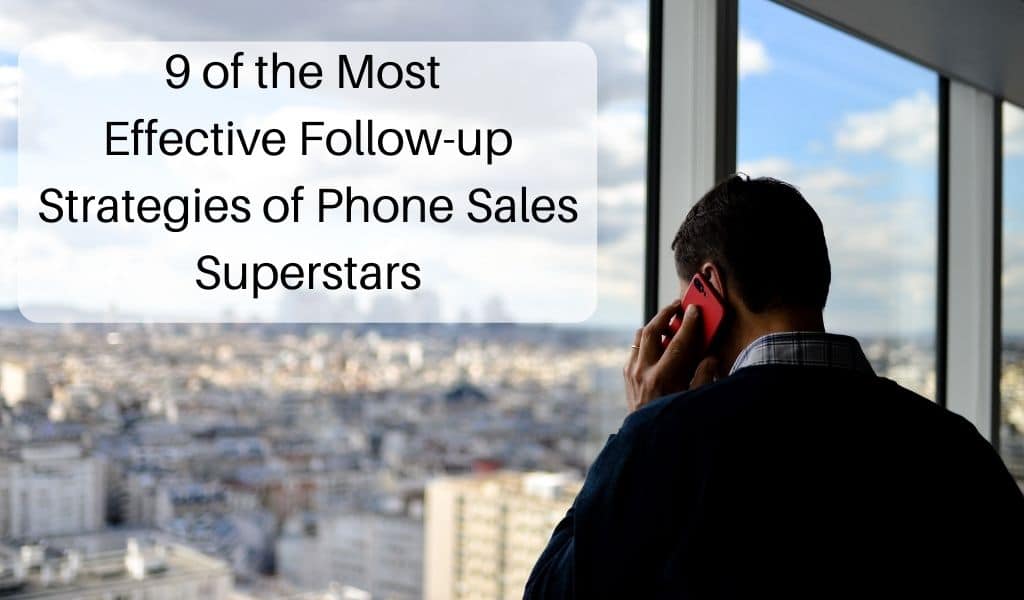Closing sales is nearly impossible without an arsenal of effective follow-up strategies. Here are some of the best ones for phone salespeople to use.
Experienced phone salespeople know that very few first calls result in a sale. In fact, only 2% of sales happen during the first meeting with a customer, which means that polished cold calling skills are only the first step towards sales success. In addition, you’ll want to practice some effective follow-up strategies if your goal is to increase the number of deals you close.
Following up is a delicate art. You want to keep in touch, but you don’t want to annoy. You want to develop a relationship with your clients, but you also want to make a sale. Along with your initial phone pitch and your follow-up emails, you need a strong addition to your approach.
Consider these effective follow-up strategies, which successful salespeople everywhere use to close more deals.
Call Logic’s auto-dialer CRM makes following up and many other tasks so much easier. Check out a free demo to learn more about the many features we offer!
9 Effective follow-up strategies you can start using right away
1. Use an auto-dialer CRM
Using call management software like Call Logic is probably one of the most effective follow-up strategies available because of all the automated and tracking functions available. Automate your call schedule, so you never miss another touch-base again. Store details of each conversation, so you know how to tailor your next one. You can even run reports to measure the effectiveness of each call, allowing you to tweak your approach further. And there are plenty of other features related to the rest of the phone sales cycle that will surely help lead to success.
2. Deliver new information
Repeating sales pitches or neglecting to demonstrate additional value are two of the most common, but least effective follow-up strategies, especially over the phone. After your initial call, make notes about a customer’s reservations or objections. Then, when you follow up, offer new, data-driven information that might further their interest. Specifically address your client’s pain-points in your first call to demonstrate how your offering can solve those problems.
3. Leave quality voicemails
In reality, many of your follow-up calls will go to voicemail. Don’t get discouraged. Instead, write voicemail scripts that allow you to leave an engaging, concise message that might grab a customer’s attention. State your name, the purpose of the call, leave a snippet of information to stoke curiosity, and end with a clear call to action. You can even use the same script for multiple customers as long as you remember to tailor it for each one. (Pro tip: use Call Logic to leave pre-recorded voicemails that will save you a ton of time and allow you to quickly get to more customers without feeling rushed.)
4. Leverage text messages
More and more people seem to prefer text message communications from salespeople they’ve interacted with before. Texts are convenient because they’re short, and they don’t get as lost as emails do since there’s usually less volume. If you have good rapport with a customer, shoot them a text message to check in, leaving the ball in their court. That said, we’d discourage you from following a text with another text. If they don’t respond to the first, revert to other effective follow-up strategies.
5. Follow up by phone and email
As a phone salesperson, your weapon of choice is likely the phone. Checking in this way is useful because it helps nurture your relationships, and it’s more personal, which helps establish trust. But many people don’t use their phones as much as they used to, making email a useful addition to your follow-up practices. Email automation is a perfect way to ensure that you get your messages out without having to rely on your memory. As with all automated or scripted processes however, be sure your emails are relevant to specific customer needs.
6. Perfect your subject line
If you’re going the email route, your subject line can make or break you. Many of your customers probably receive over a hundred (if not more) emails a day, and they surely won’t read them all. They’ll glance over subject lines and senders and decide what’s most important. Make yours stand out. Choose your words carefully (some are more effective than others), generate excitement or interest, and avoid all capital letters.
7. Be persistent, not annoying
There’s a good chance that your first follow-up won’t be enough. Most phone sales typically require at least five follow-up calls. This is another place where call center automation can help, since remembering when and how to follow up with so many people is challenging. We suggest you make your first follow up call within a few business days of your first meeting. After that, wait until the better part of the following week. Gradually stretch out your follow-ups, whether phone or email, until you’re able to connect or close the deal. If you’ve been unsuccessful after six follow-ups, it’s probably time to put that lead to bed.
8. Make yourself available
When one of your customers does get back in touch with you, it’d be a shame if you don’t connect after all the hard work you’ve put into effective follow-up strategies. If you’re preoccupied with another meeting or something else, that’s understandable, but make calling the customer back your priority once you’ve completed your current task. The longer you wait, the more likely a customer will lose interest or, worse, go with another company. When your customers feel important, they’re much more likely to want to do business with you.
9. End each call with next steps
Finally, every time you do come to the close of a call, be it the first one or a follow-up, ensure that the last words out of your mouth are a clearly defined set of next steps. Do you want another meeting? Say so, and get their availability. Do you want to show them a demo? Schedule a time. Are you at the point where you need a decision? Politely say so. Few customers, if any, will initiate the next steps of the sales cycle. If you don’t do it while you still have their ear, it may be very difficult or even impossible to push the process forward and ultimately end with that coveted close.
Remember, your follow-up strategies are just as important as your initial cold calling strategies. Don’t neglect putting in the work if you hope to find success with your sales calls.
Make more calls, manage your customers in a cloud database, track your call statistics, and much more with Call Logic. Schedule a free demo today to see what you’ve been missing!

